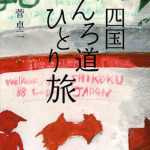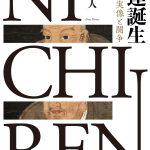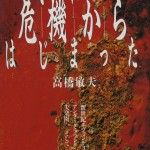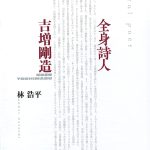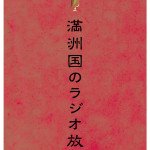- 2019-7-1
- お知らせ, 論創通信, The Nichiren Buddhism【ミステリーな日蓮 英訳版】
13. After Nenbutsu, Esoteric Buddhism must be denied!
Hiroto Ema
For what purpose did Nichiren begin to draw Mandaras (Gohonzon) which had the executor of the Lotus Sutra as the object of devotion? As well as the expression of Mandaras, the noticeable change of Nichiren after the transportation to Sado was the attack against Esoteric Buddhism such as Singon Syu (True Word school) and Tendai Syu (Tendai school). It is not that he hadn’t attacked Esoteric Buddhism before, but after the transportation to Sado he started to prepare in real earnest and fired the opening shot.
In the first place, Mandara was a representation of view of the world which had Mahavairocana(a Buddha worshiped in Esoteric Buddhism) as its idol, and essential to prayer and training. So the Mandaras by Nichiren, in which Mahavairocana was replaced by the executor of the Lotus Sutra as the object of devotion, were in themselves the denial of Esoteric Buddhism and the attack against it. Nichiren, who, in a competition against Nembutsu, before had aimed at the restoration of the belief in the Lotus Sutra by changing the object of dedication from Amida Buddha to the Lotus Sutra, then tried to compete with Esoteric Buddhism by showing the Mandaras in which Mahavairocana was replaced by Nichiren, the executor of the Lotus Sutra, and establish the new belief in it in an era of misery.
Nichiren also said that the new belief in Lotus Sutra which had him as the object of devotion would spread even abroad as the true and only doctrine of Buddhism in an era after Shakyamuni had passed away. In “Representative Men of Japan”, Kanzo Uchimura wrote;
“His ambition, too, embraced the whole world of his time. He speaks of the eastward march of Buddhism from India to Japan till his time, and of the westward march of its improved form from Japan to India from his time on. He was therefore an exception among passive receptive Japanese…”
Uchimura also claimed the creativity and independence of Nichiren had been shown in his great ambition embracing the whole world, and concluded as follows.
“Nichiren minus his combativity is our ideal religious man”
How do you think about the opinion of Uchimura? If deprived of combativeness, could Nichiren, who tried to restore the belief in Lotus Sutra through the attack against Nenbutsu and Esoteric Buddhism, still hold his originality? Very unlikely, for the combativeness was the source of creativity and independence of Nichiren. To confirm it, we will discuss afterwards the reason why Nichiren attacked Esoteric Buddhism.
July 1st 2019
Please let us know your feedback via e-mail.
(Next section will be released on August 1st)
Back Number →The Nichiren Buddhism
13.念仏の次は、密教だ!
江間浩人
日蓮は、法華経の行者を本尊とする曼荼羅を、どのような目的で書き始めたのでしょう。
曼荼羅の表示と並んで、佐渡以降、日蓮に顕著に見られた変化は、密教(真言宗・天台宗)に対する攻撃です。それまでも密教への批判がまったくなかったわけではないのですが、佐渡流罪を境に本格的に準備し、攻撃を開始しました。
そもそも曼荼羅は、密教による世界観を図示したもので、大日如来を本尊とし、祈祷・修法には欠かせないものでした。この本尊を、大日如来から法華経の行者に代えた日蓮の曼荼羅は、それ自体で、密教の否定であり、攻撃だったのです。かつて、念仏に対抗して、帰命の対象を阿弥陀仏から妙法蓮華経に改めて法華経信仰の再興を目指した日蓮は、今度は、本尊を大日如来から法華経の行者である日蓮に改めた曼荼羅を示して密教に対抗し、末法における新たな法華経信仰を確立しようとしたのです。
日蓮は、自身を本尊とした新たな法華経信仰が、釈迦の末法において、真実無二の仏法として海外に流布していくことになる、とも述べました。内村鑑三は『代表的日本人』の中で次のように語っています。
「日蓮の大望は、同時代の世界全体を視野に収めていました。仏教は、それまでインドから日本へと東に向かって進んできたが、日蓮以後は改良されて、日本からインドへ、西に向かって進むと日蓮は語っています。これでわかるように、受け身で受容的な日本人にあって、日蓮は例外的な存在でありました」
日蓮の創造性と独立心は、世界を視野に収めた大望を有する点でも発揮されたと内村は言います。そして、結論として次のように述べています。
「闘争好きを除いた日蓮、これが私どもの理想とする宗教者であります」
読者の皆さんは、この内村の意見をどう思われたでしょう。念仏、密教への攻撃を通して法華経信仰を再興しようとした日蓮から、闘争を差し引いてしまったら、果たして日蓮の独創性はあったでしょうか。日蓮は徹頭徹尾、闘争の人でした。闘争こそ日蓮の創造性と独立心の源です。それを確認するために、次回は、なぜ、日蓮が密教を攻撃したのか、その理由を考えてみたいと思います。
—ご感想はお問い合わせメールまで(次回は8/1予定)—




